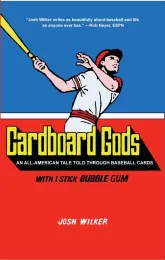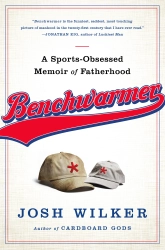Yesterday evening, as I was waiting for a train on the Blue Line at an outdoor station overlooking a highway, I saw a trailer come loose from a large dump truck and careen down the road, the disconnected attachment shooting up an angry plume of sparks as it scraped against the pavement. My train was arriving just as this was happening, so the last I saw was the dump truck moving over and slowing down to the speed of the unhinged trailer, the two wheeled vehicles side by side, one with a driver, one without, traffic already starting to congeal in their wake. On the train ride home, I looked up from my book just once, and it was in time to see two freshly crumpled cars on the side of the highway, the drivers exchanging insurance information grimly. After the train ride, I went to the post office, where all the computers were down and all the priority mail envelopes were gone and all the chained pens were out of ink and a ragged disgruntled line stretched all the way out the door to the parking lot. On my walk home, I watched a black girl in a crowded car scream at a couple white-helmeted Caucasians on bicycles, “Get the fuck out the street!” A few minutes later, a tan woman in a gigantic SUV nearly ran me over while barreling out of an alley and babbling on her cell phone.
So this morning, naturally, I decided I’m going to write about the 1978 Atlanta Braves one card at a time, in order of their appearance in the Topps numbering system for that year. Phil Niekro comes first: Topps 1978 card number 10. His card is one of the few Braves cards for that year given special treatment by the Topps hierarchical numbering system. The scarcity of Braves with cards ending in a zero or a five (an honor bestowed on stars and near-stars) was a big hint that the Braves would be in trouble in the coming year. There were other fairly thunderous omens to that effect. The team was coming off a dismal 101-loss season in 1977 and had been adrift for some years, ever since their anchor Hank Aaron had meandered back to Milwaukee to log a couple last seasons as a designated hitter. What happens when things have been falling apart for so long it starts to feel like the way of the world?
Maybe Phil Niekro knows. By 1978, Niekro had been around for a long time. He was older than all but a handful of players in the game. He had just completed a season in which his prodigious efforts were transformed by the decay of the team into a muddy swamp in which distinctions of good and bad were impossible to discern. In 1977, he had led the league in innings pitched (330) and complete games (20) and collected 16 wins and struck out a career high 262 batters; he also led the league in losses (20), hits allowed (315), walks (164), earned runs (148), and wild pitches (17).
Niekro’s league-topping totals, good, bad, and ugly, derived from a mixture of his peerless durability and consistency, his reliance on the magic and mayhem of the knuckleball, and the putrid nature of the 1977 Braves, who needed Niekro to absorb an abnormally large share of the punishment for their general ineptitude. He was pretty much all they had, like one good soldier in a besieged fort otherwise manned by half-wits and invalids. Soon enough, he’d draw all enemy fire. Soon enough, the walls would cave in.
Niekro’s reaction to all this, at least as far as can be surmised from his photo in this 1978 card, was to stolidly hang in there and take it. The stadium is empty and the future is bleak. But Phil Niekro is not quitting. Phil Niekro will endure.
****
(Love versus Hate update: Phil Niekro’s back-of-the-card “Play Ball” result has been added to the ongoing contest.)







You must be logged in to post a comment.